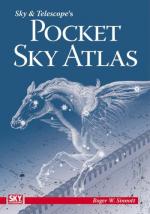|
This section contains 3,406 words (approx. 12 pages at 300 words per page) |

|
During the later part of the eighteenth century, while European astronomers debated the merits and deficiencies of both refracting and reflecting telescopes, the Englishman William Herschel recognized that regardless of the type of telescope, the larger the lens or mirror, the better the image created. Herschel's conclusion prompted a race among astronomers to build giant telescopes, a competition that continues to this day.
In 1774, at the relatively late age of thirty-five, Herschel abandoned the life of a professional musician to focus on constructing telescopes and observing the heavens. After making inquiries about purchasing a five or six-foot-long reflector telescope, only to learn that no instrument that size had ever been built, Herschel sat down to cast and polish several nine-inch mirrors for a ten-foot-long Gregorian telescope of his own design. Herschel's sister Caroline, who shared Herschel's interests, wrote that on...
|
This section contains 3,406 words (approx. 12 pages at 300 words per page) |

|




